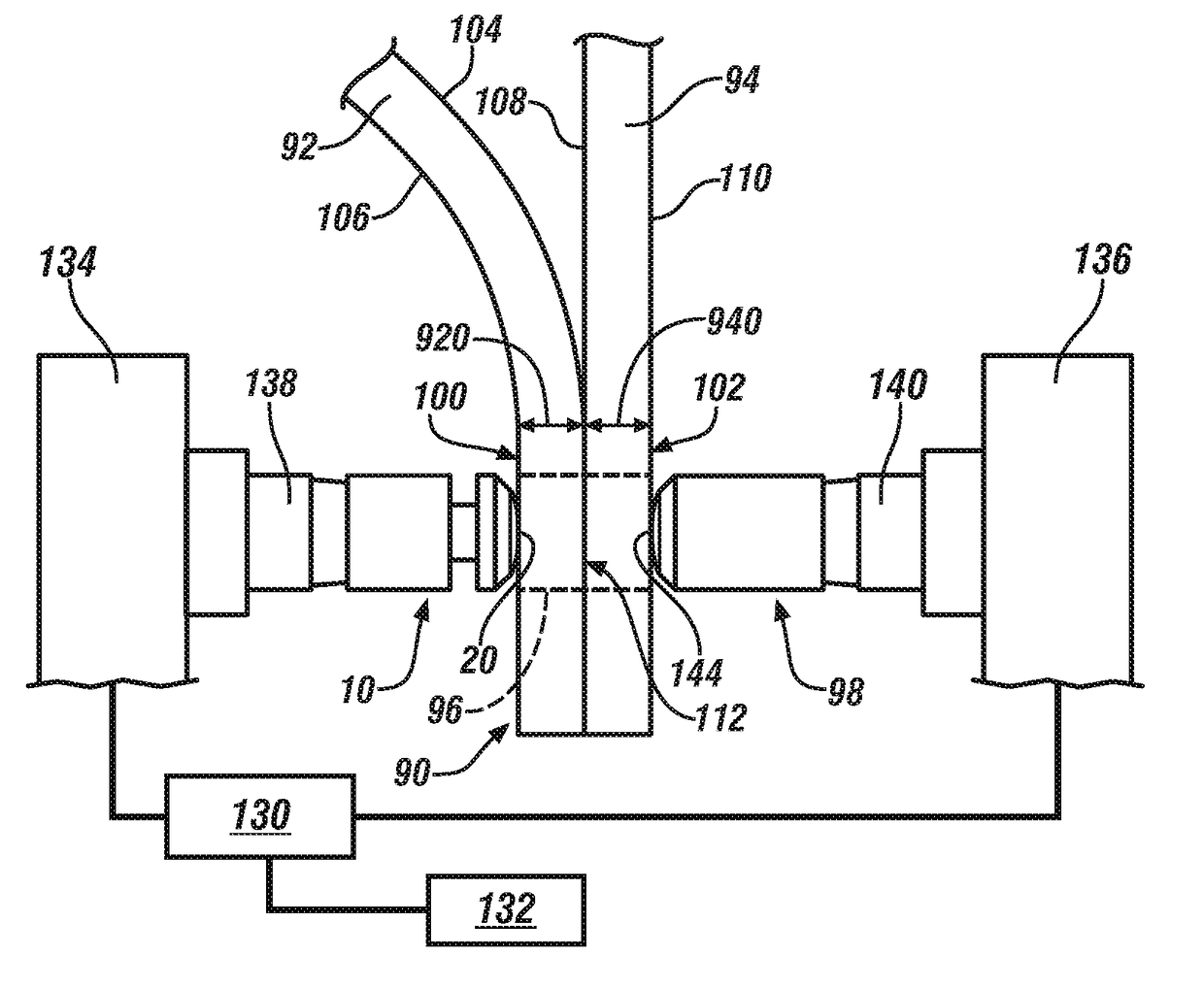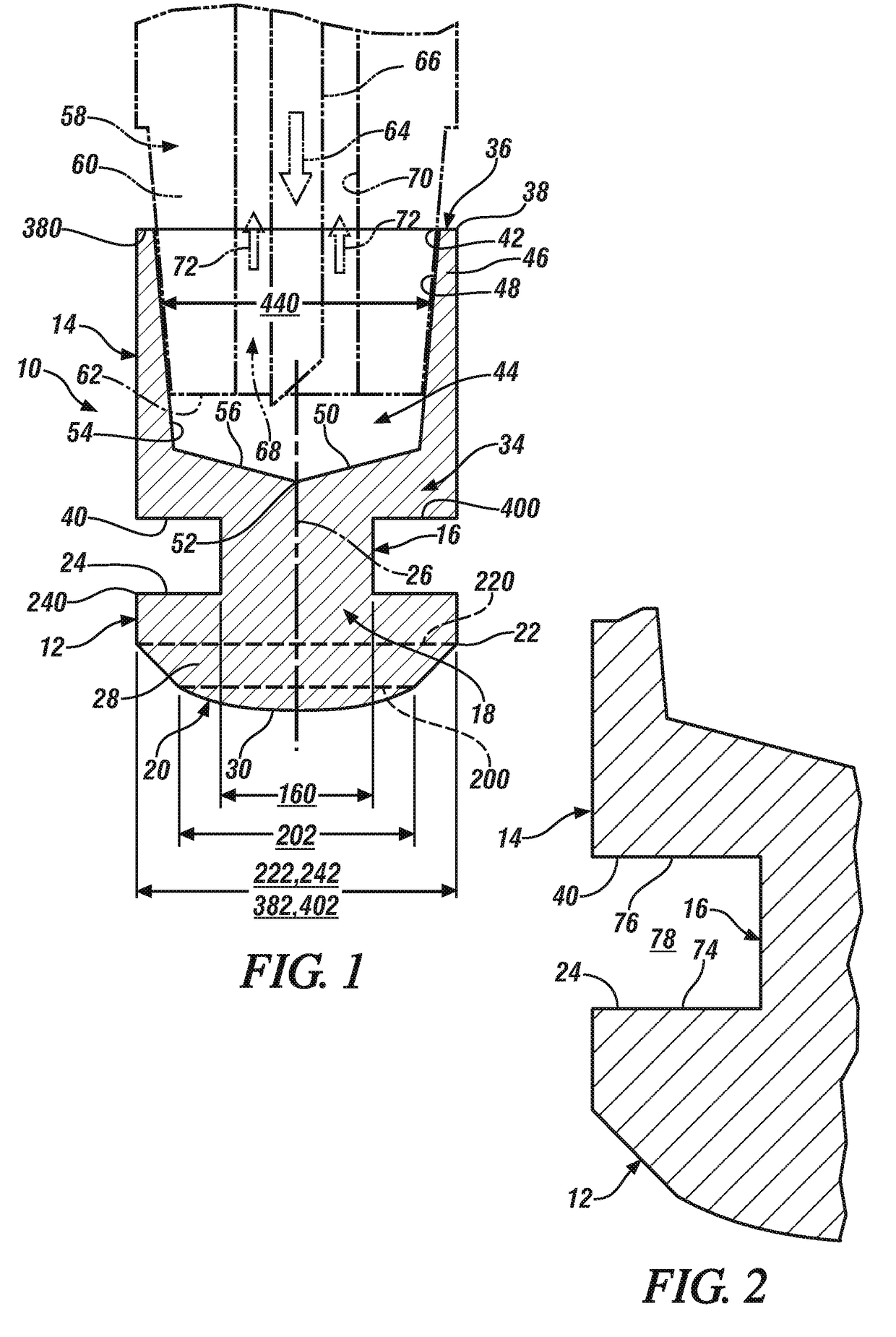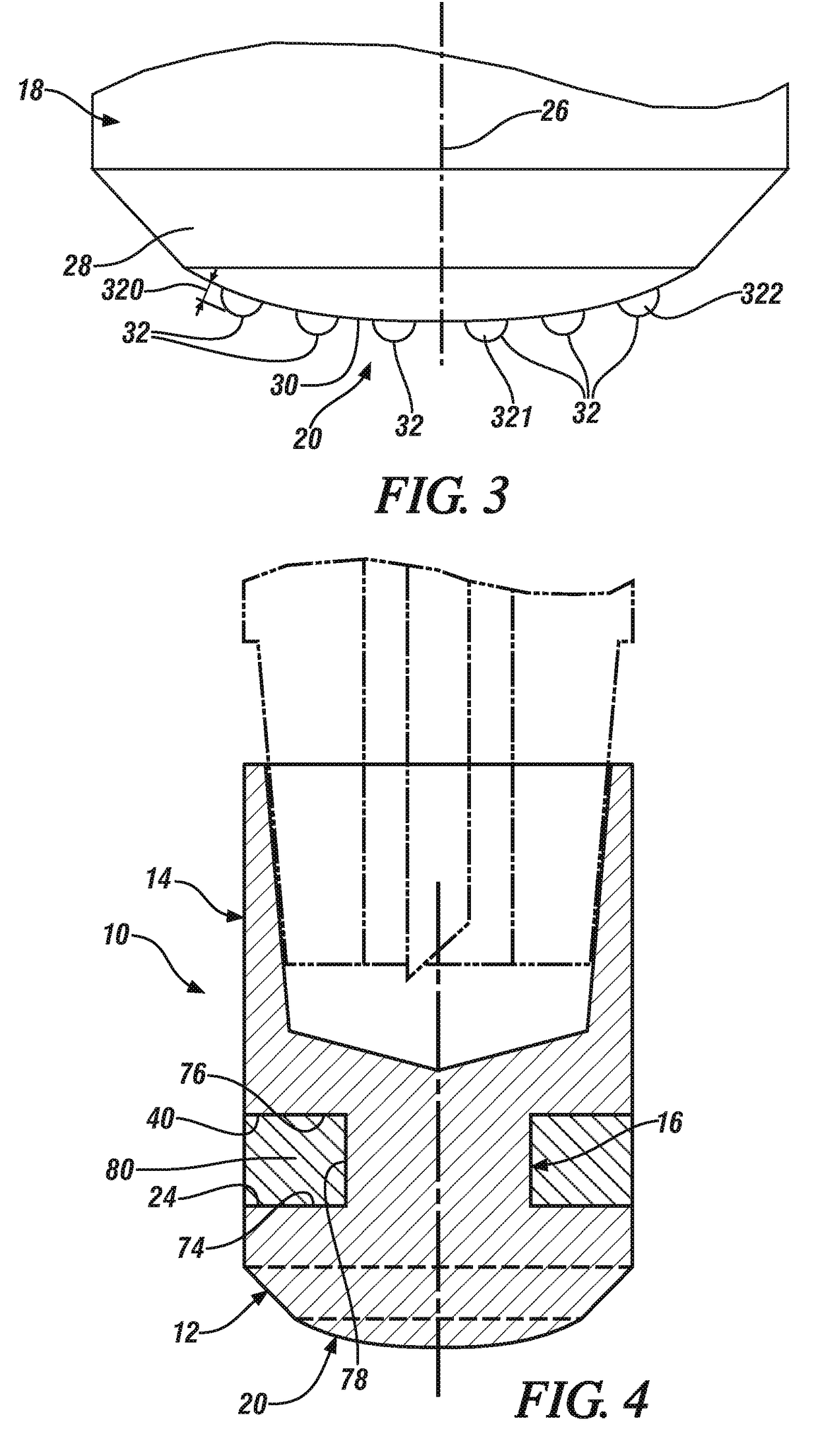Welding electrode for use in resistance spot welding workpiece stack-ups that include an aluminum workpiece and a steel workpiece
a welding electrode and resistance spot technology, applied in the direction of cooling electrodes, soldering equipment, manufacturing tools, etc., can solve the problems of difficult to effectively control and concentrate heat within the aluminum workpiece, the near-interface defects of the growing weld pool, and the difficulty of spot welding an aluminum workpiece to a steel workpiece, etc., to achieve the effect of high thermal conductivity of the aluminum workpiece and the strength of the welding
- Summary
- Abstract
- Description
- Claims
- Application Information
AI Technical Summary
Benefits of technology
Problems solved by technology
Method used
Image
Examples
Embodiment Construction
[0023]A welding electrode that is useful in resistance spot welding applications is represented by reference numeral 10 in FIGS. 1-11. In particular, the welding electrode 10 may be used to spot weld a workpiece stack-up that includes at least an aluminum workpiece and an overlapping and adjacent steel workpiece, as will be described in more detail below with reference to FIGS. 5-12. For example, the welding electrode 10 is operable to spot weld a “2T” workpiece stack-up (FIG. 5) that includes only the adjacent and overlapping pair of aluminum and steel workpieces. Other workpiece stack-up configurations are of course amenable to spot welding in a similar way. Indeed, the welding electrode 10 is also operable to spot weld a “3T” workpiece stack-up (FIGS. 6-7) that includes the adjacent and overlapping pair of aluminum and steel workpieces plus an additional aluminum workpiece or an additional steel workpiece so long as the two workpieces of the same base metal composition, i.e., alu...
PUM
| Property | Measurement | Unit |
|---|---|---|
| Fraction | aaaaa | aaaaa |
| Fraction | aaaaa | aaaaa |
| Diameter | aaaaa | aaaaa |
Abstract
Description
Claims
Application Information
 Login to View More
Login to View More - R&D
- Intellectual Property
- Life Sciences
- Materials
- Tech Scout
- Unparalleled Data Quality
- Higher Quality Content
- 60% Fewer Hallucinations
Browse by: Latest US Patents, China's latest patents, Technical Efficacy Thesaurus, Application Domain, Technology Topic, Popular Technical Reports.
© 2025 PatSnap. All rights reserved.Legal|Privacy policy|Modern Slavery Act Transparency Statement|Sitemap|About US| Contact US: help@patsnap.com



